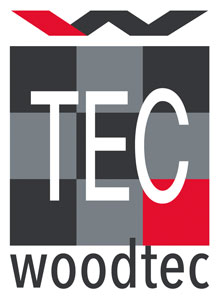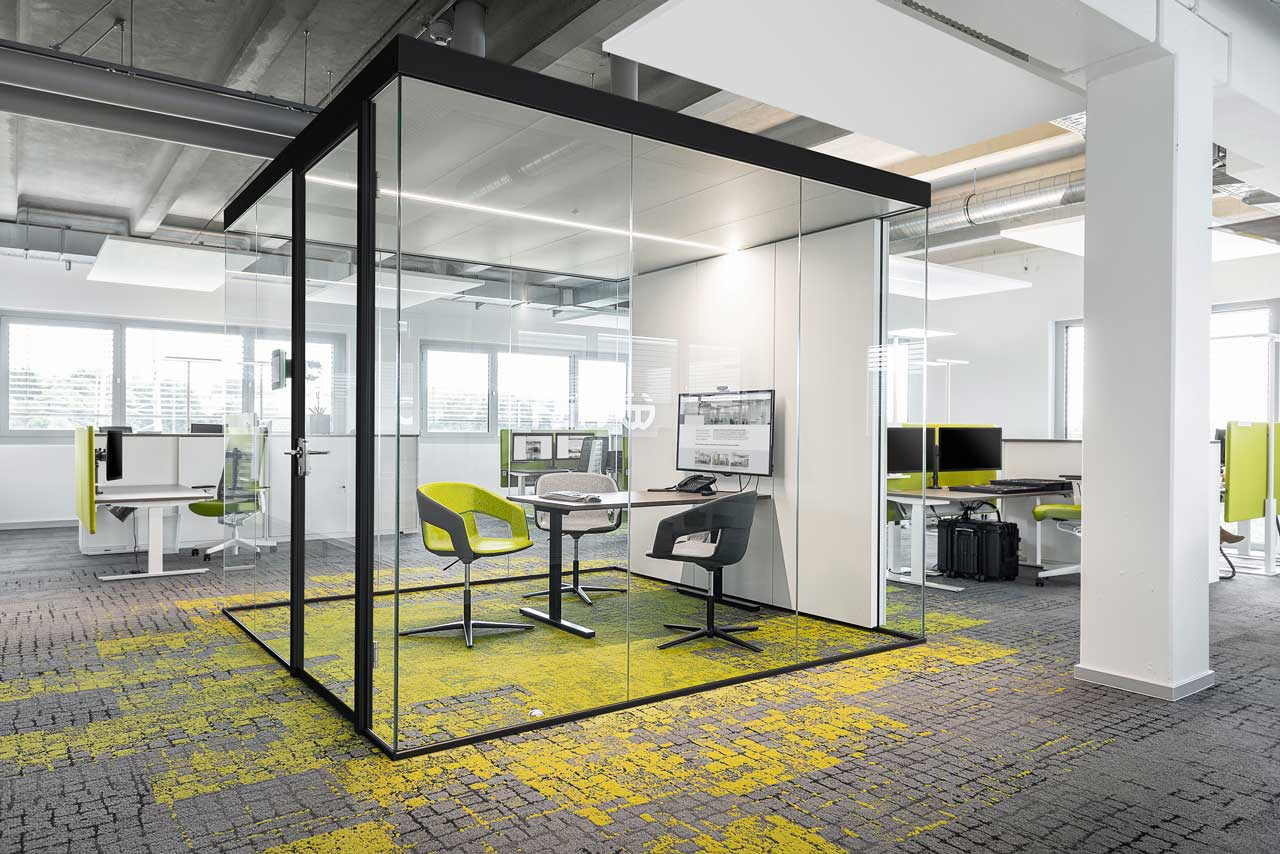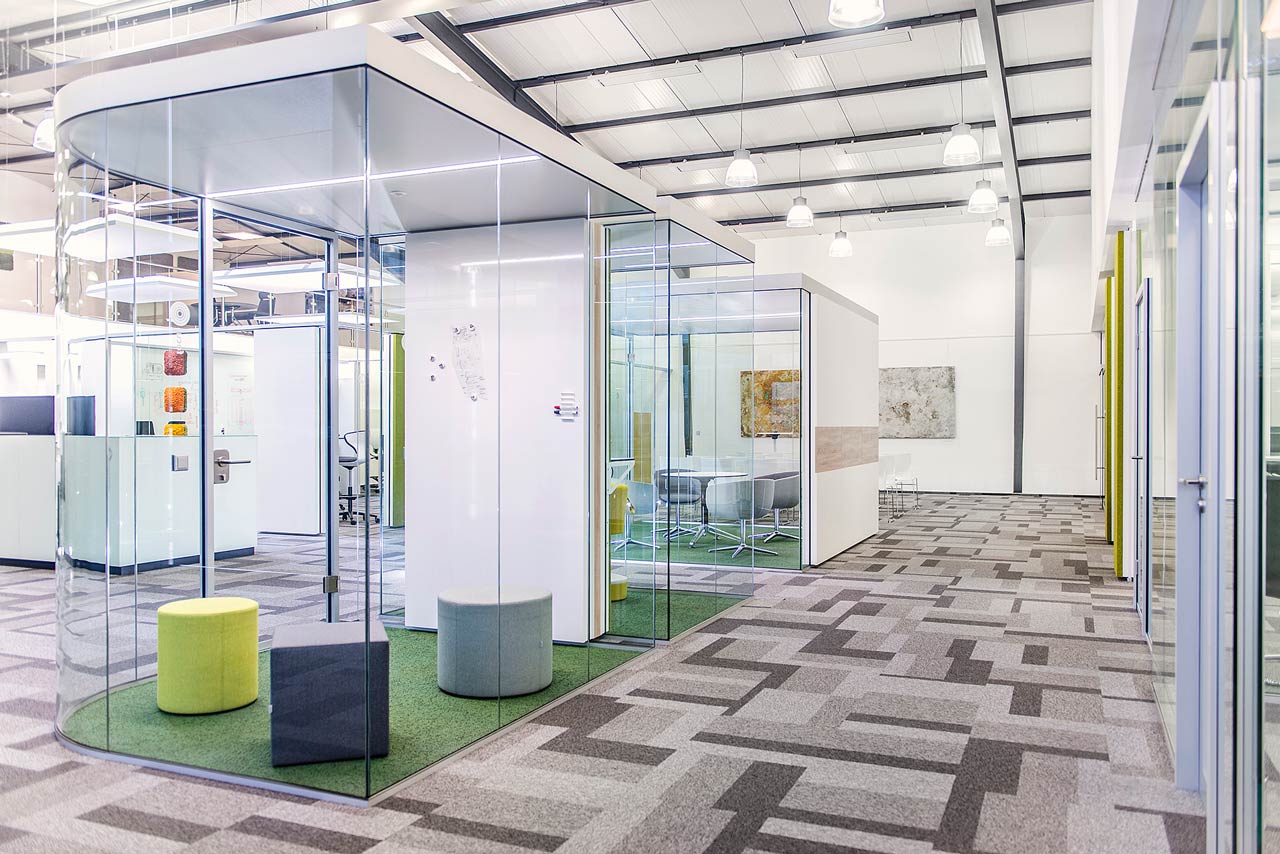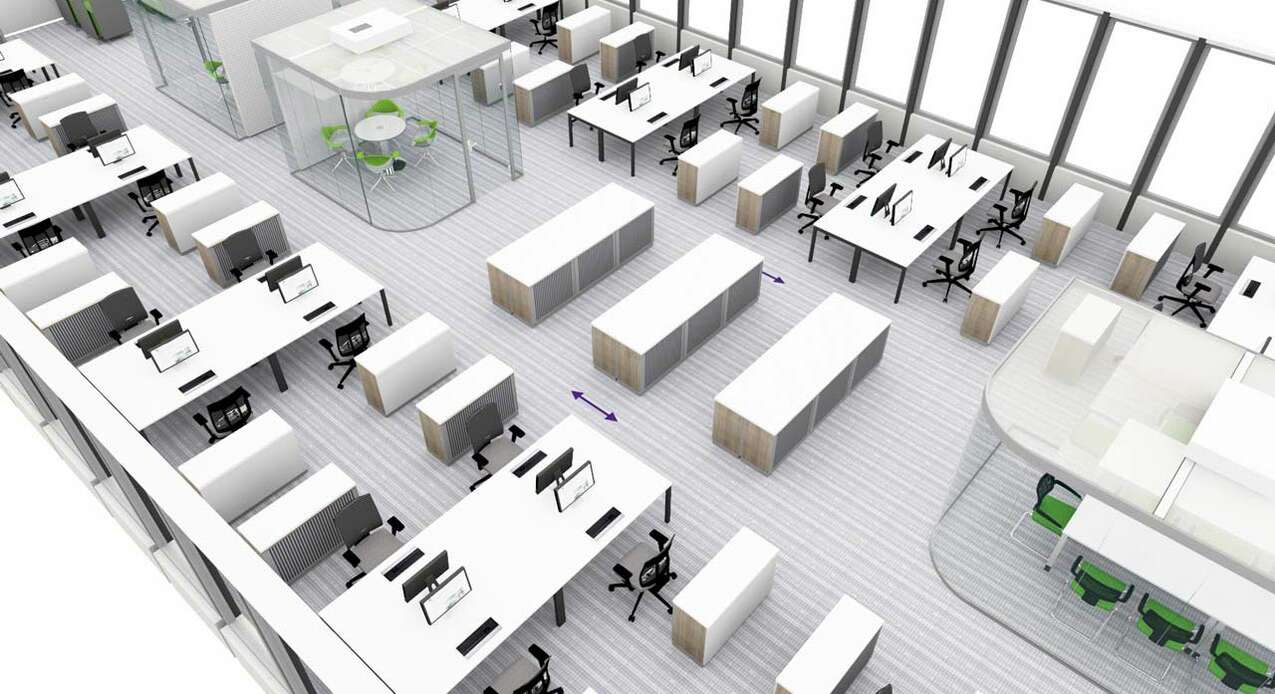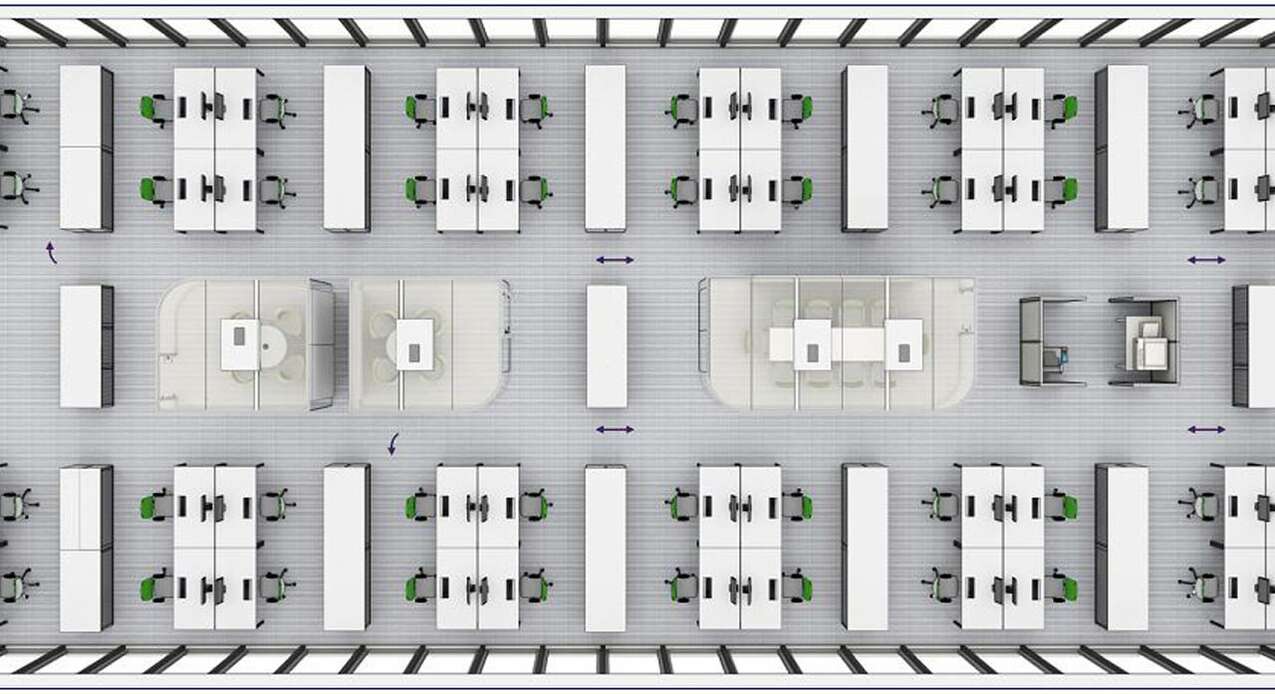
Room-in-room supports the pursuit of spatial diversity in the agile office
The vetroCUBE room-in-room system stands freely on the site and is self-sufficient, i.e., independent of the building's infrastructure (e.g., ventilation). Thanks to the room-in-room design, these retreat spaces can occupy areas in the central zone that are suboptimal for office workstations. Conversely, the room-in-room system keeps the valuable space along the facade free for workstations. The resulting planning possibilities are the basis for the development of agile office spaces. This agility, in turn, is the prerequisite for a hybrid work model. Employees will only voluntarily return to the office if the space there conveys a communicative atmosphere, if they find a club they want to be part of. After all, the concentrative part of the work is also secluded, capable of being performed from home.
Room-in-room keeps the facade free for workplaces
- Freestanding
- Detached from the building structure
- Self-sufficient, especially with regard to ventilation
- Use of the central zone
- Facade remains free for workstations
- Space for communication
- Space for concentration
- Retreat areas directly at the workstation
- Transparent and unobtrusive appearance
- Maintains direct visual connections
vetroCUBE supports spatial diversity, agile work, the hybrid office world and uses space effectively
An open-plan office space can be planned independently of the facade structure. This allows for intensive use of the space along the facade. Open-plan office spaces are considered to be highly suitable for communication. Direct visual connections shorten many processes. This is precisely why planners see open-plan office spaces as a prerequisite for agile working. Furthermore, the demand for flexible use of office space is increasing. Anyone involved in the operation of office buildings knows the significance of restructuring for space planning. Last but not least, high real estate costs and the resulting desire to make optimal use of available office space are reinforcing the trend toward open-plan offices.
At the same time, the open-plan office is considered acoustically problematic. It has a reputation for being loud and disruptive. Telephone calls can be heard from far away. Conversations or even team meetings disturb neighboring employees. The trend toward component-activated buildings is also exacerbating the situation. Acoustically activated spaces are scarce. The resulting longer reverberation times further create unrest in the space. The need to create quiet spaces is obvious.
The room-in-room system promotes the alternation between individual work and teamwork
Room-within-a-room design is a key component for enhancing open space. Employees have access to retreat areas in close proximity to their workstations. The vetroCUBE system thus provides the spatial foundation for the desired transition between concentrated individual work and communication-oriented group work. It is the foundation for agile working. Different usage areas are created within the office space. Employees find their personal comfort zone depending on the current work requirements. The system thus fulfills the demand for spatial diversity. Young, team-oriented colleagues and older, experienced "lone wolves" come together. Communication develops. Knowledge is transferred and remains within the company.
